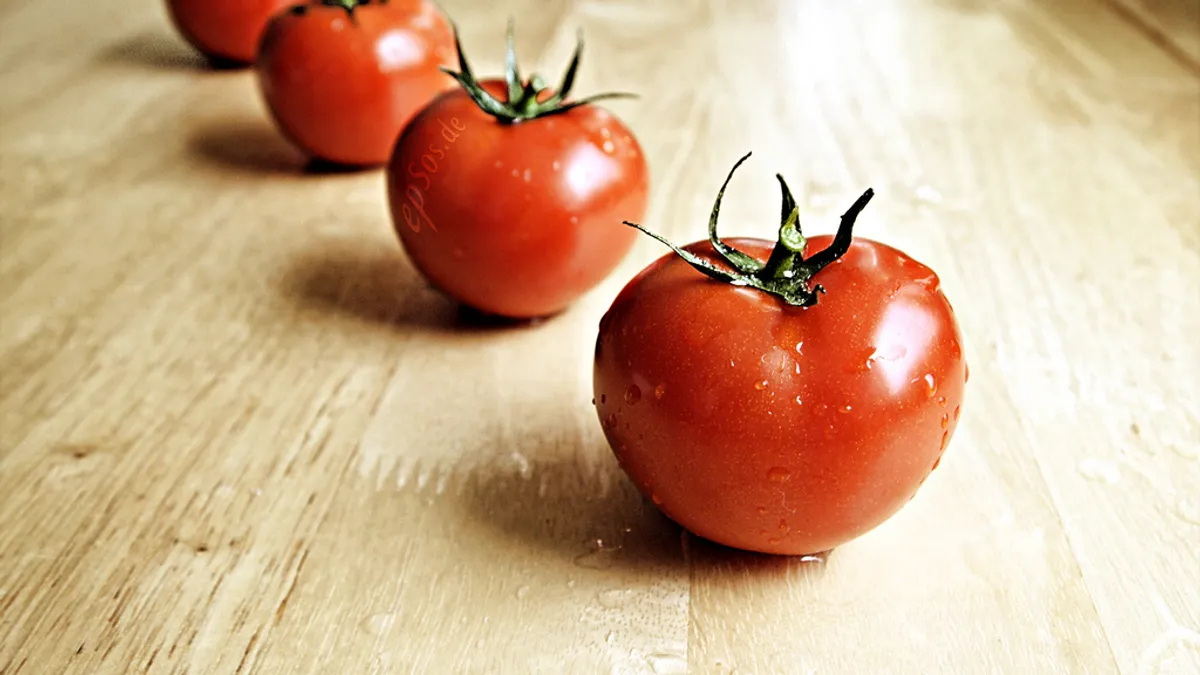Dive Brief:
- Wendy's will no longer source tomatoes grown in outdoor fields by early 2019, using only tomatoes grown in indoor greenhouse or hydroponic farms, the company said in a news release.
- The tomatoes will come from about a dozen suppliers in North America, with the majority coming from the U.S. and Canada.
- Wendy's said taste and quality are the "top factors" for altering its sourcing, but the restaurant chain also cited supply predictability and continuity of supply as reasons to switch to indoor environments.
Dive Insight:
A supply chain without the necessary supplies is just a broken chain. Sometimes it's a problem with a vendor facility not able to keep up with demand from its customer.
In other cases, supply shortages are out of the vendor's control. Crops grown in outdoor farms require cooperation from Mother Nature.
An unseasonably cold winter in 2010 created a shortage of tomato crop from Florida, leading Wendy's to stop regularly including tomatoes on sandwiches, only adding them if a customer asked. More recently, Hurricane Irma impacted Florida's tomato crop, leading to a shortage and surging prices on the produce.
Since the 2010 incident, Wendy's has been shifting to greenhouse and hydroponic tomatoes, according to The Wall Street Journal, and now the chain has expanded its network to have enough suppliers for all restaurants in North America.
By buying its tomatoes only from indoor farms, the restaurant chain is removing the risk factors associated with outdoor agriculture and unpredictable weather, providing itself with a constant supply of the fresh fruit.
Wendy's move to source most of its tomatoes from Canada and the U.S. mirrors growing trends in the food industry to source locally. Not only do consumers like the idea of supporting local farms, but closer sources create shorter distances for goods to travel.
With the trucking industry squeezed for capacity and fuel prices rising, businesses often welcome local suppliers as a way to cut costs and increase margins.















